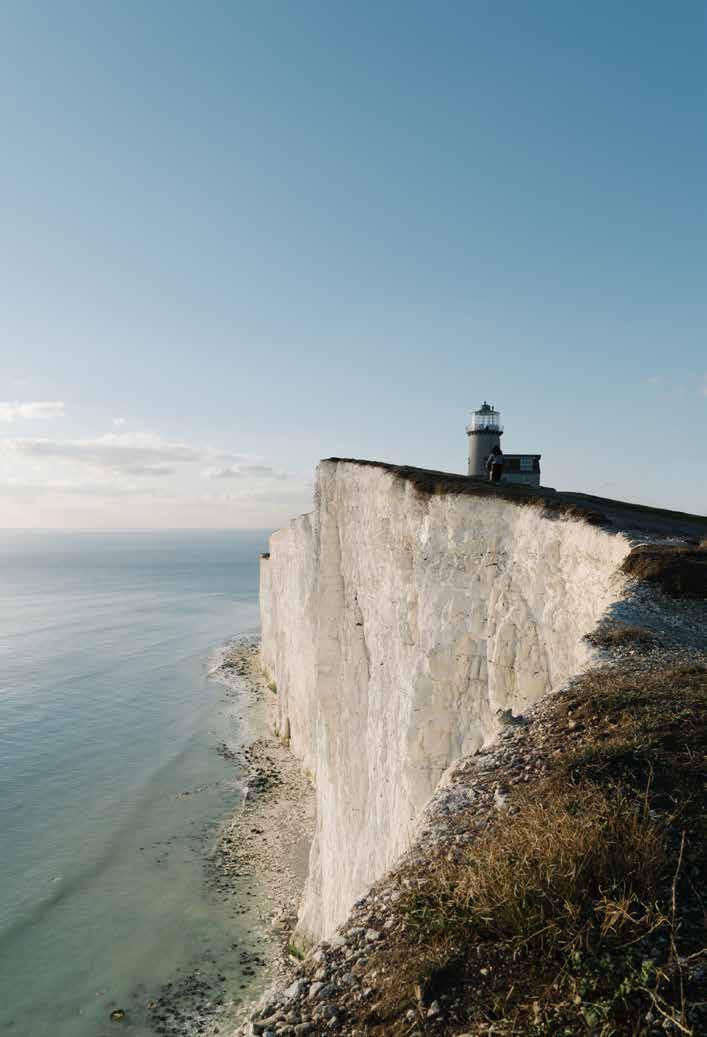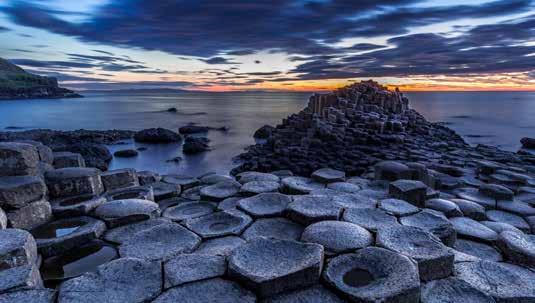
3 minute read
A Matter of Trust
The National Trust looks after 780 miles of British coastline
What do the white cliffs of Dover, the King’s Head in Aylesbury, Sir Isaac Newton, the barbastelle bat and Lady Penelope of Thunderbirds fame have in common? They all have strong connections with The National Trust, the renowned independent charity which looks after historically significant houses, buildings, gardens, coast and countryside throughout the British Isles. And this year it is marking its 125th anniversary.
Advertisement
Although officially founded in January 1895 when the Trust was registered under the Companies Act, the idea for an organisation to protect the nation’s heritage started to germinate 11 years previously when Octavia Hill, a leading social reformer, was asked to help preserve Sayes Court Garden in south-east London . It brought her to the attention of Sir Robert Hunter, solicitor for the Commons Preservation Society, and during successful campaigns to resist development on Parliament Hill Fields, Vauxhall Park and Hilly Fields in London, they were joined by Canon Hardwicke
National Trust says...
“Over the coming weeks our digital platforms - our website, social media feeds, podcasts and video - will become even more important, ensuring the places of nature, beauty and history that we care for on behalf of the nation can remain open for business virtually while we are temporarily closed.
“We will also be ramping up our efforts to help people connect with nature wherever they are and to find moments of joy in the world around them. We will be providing rich content and staying in touch with our members and followers throughout this time.”
Rawnsley and, in 1895, founded the National Trust for Places of Historic Interest or Natural Beauty.
Within weeks they were gifted their first site - the five acres of cliff top at Dinas Oleu in Wales - and, in a year, bought their first building, Alfriston Clergy House, for £10 (about £600 in today’s currency). Today, the Trust owns more than 500 properties which were visited by almost 28million people in 2018-19. They have more than 5.6million members, second only in the United Kingdom to the AA, and are the largest voluntary conservation organisation in Europe.
Impressive statistics, but consider these:
The National Trust looks after 780 miles of British coastline, including the iconic white cliffs, and more than 248,000 hectares of land; they care for over 500 historic houses (Woolsthorpe Manor in Grantham was where Newton was born and where a falling apple inspired his theory of gravity) castles, parks, ancient monuments, and nature reserves. And that includes nine lighthouses, 56 villages (yes, whole villages), 39 pubs (the King’s Head being one of them) … and a gold mine in Carmarthenshire. As well as 49 churches, nine monasteries … and eight billiard tables.
It also looks after eight World Heritage sites including the Lake District, Stonehenge landscape, the Jurassic Coast, the Giant’s Causeway – probably their most visited site – and Hadrian’s Wall.

It costs almost £370million a year and as many as 14,000 staff to look after these sites – plus 65,000 volunteers in more than 500 roles. As a registered charity, they rely wholly on subscriptions, donations (£97.8million in 2018-19 alone) … and cups of tea (they sell more than 4.5million a year on their premises).
Trust properties have been used as the backdrop for TV and films from Game of Thrones to Harry Potter. And Stourhead House in Wiltshire was the inspiration for Lady Penelope’s residence in the original Thunderbirds puppet series in the 1960s. They had to pull some strings for that …
And as for the barbastelle bat … all 17 species of UK bat have been recorded as roosting or breeding on Trust sites, while their land was used to successfully reintroduce the beautiful Large Blue butterfly to England after it was declared extinct in the UK in 1979.
However, if your impression of a NT visit is traipsing round a fusty country home or battling the elements yomping across hill and vale, think again as there’s more than a hint of family focus on the Trust’s calendar Individual events are detailed on their website.








